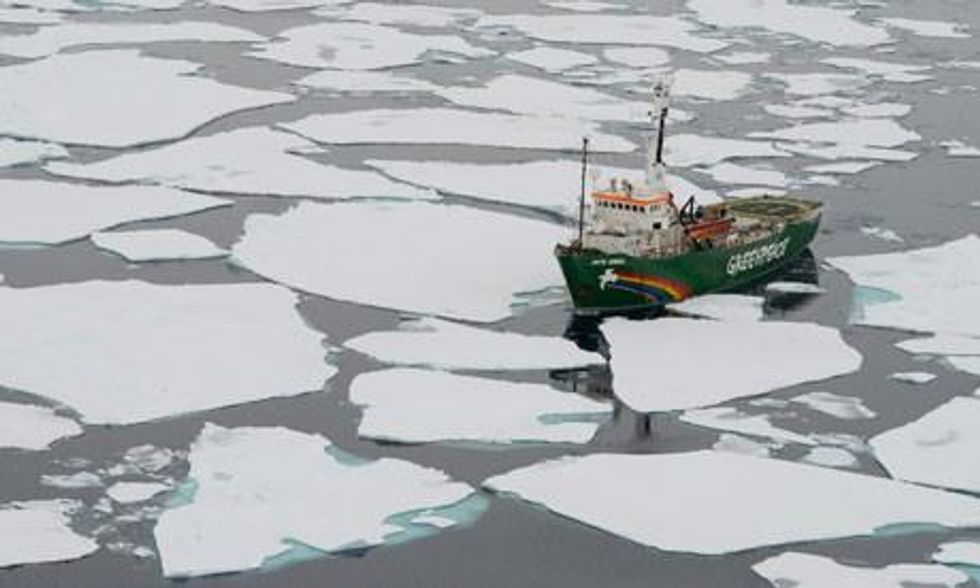Where is the ice? We are now at 83.20N which is very close to the north pole yet still there is no continuous ice cover (head here for more on my journey through the Arctic). We are mostly among small, thin, one- and two-year-old floes, with very little of the older, harder and more resilient "multiyear", or permanent ice that you would expect in these latitudes.
Our ice pilot, Arne Sorensen, went up in the helicopter and found little change even as far north as 83.50 - just 350 miles from the pole. Just finding an ice floe big enough to moor the 50 metre-long Arctic Sunrise for the scientists aboard to conduct their experiments has proven harder than expected - something that many think is almost unheard of at this latitude.
The obvious inference is that the ice has retreated far further this year than before and we will need to check previous years' satellite data to confirm this. But there may actually be far less ice in the Arctic than the satellite figures suggest.
In winter when the sea surface is frozen up here, scientists can be pretty sure how much ice there is. But in the summer months when the ice is melting and there's much more water around, the satellite can become confused.
It can think that melt water sitting on the ice floes is open water; it may not be able to tell the size of the floes or the distance between them; it can have problems "seeing" the ice because of clouds and fog.
In short, the melting effect makes it much harder to quantify the amount of ice there is and the satellite tends to see more ice than there actually is. That's why monitoring groups such as NSIDC or the university of Bremen try to compensate with weather filters or by calculating the ice extent over a number of days rather than on individual ones.
We know, here on the ship, how misleading the satellite data can be.
Here, possibly only 50% of the sea is covered in ice. Yet the data is telling the scientists that there is continuous ice cover at this latitude.
That's why Julienne Stroeve, ice expert from NSIDC the folk expected to flag the record minimum ice extent record in a few days' time - has been filming the ice conditions every few hours.
When she returns, she hopes to match her real-time observations of the ice conditions with the satellite data. She speculates that the low fog conditions we have experienced could be making it seem there is more ice than there actually is.
Either way, the situation is deadly serious. Both satellites and human observation suggests that the ice is now so thin over much of the arctic that it doesn't matter how much it freezes in winter, because it will melt in the summer. That would mean ice-free summers in the arctic coming far sooner than the models have predicted.
Strangely, what we are beginning to see is just what the old Arctic explorers and visionaries such as Elisha Kane, Isaac Hayes, Captain W E Parry and Sir John Barrow hoped to find. It was widely believed from the 16th century that there was a tepid lake at the north pole, and that another continent lay beyond the ice. The problem facing explorers then was to get beyond the icepack which barred the route. It was this prospect of Arcadian lands that spurred these adventurers.
Today, the prospect of an ice-free Arctic and easy access to the other side of the world has become the dream of oil, mining and shipping companies. The profits they see inn in the ice free sea are similar to those seen by the British from a clear passage over the top of the world to China and the east.
But as Shell found off the coast of Alaska this week, nature bites back. No sooner had the company started preliminary drilling for oil in the Arctic Chukchi sea it had to abandon the work because of freezing conditions.


